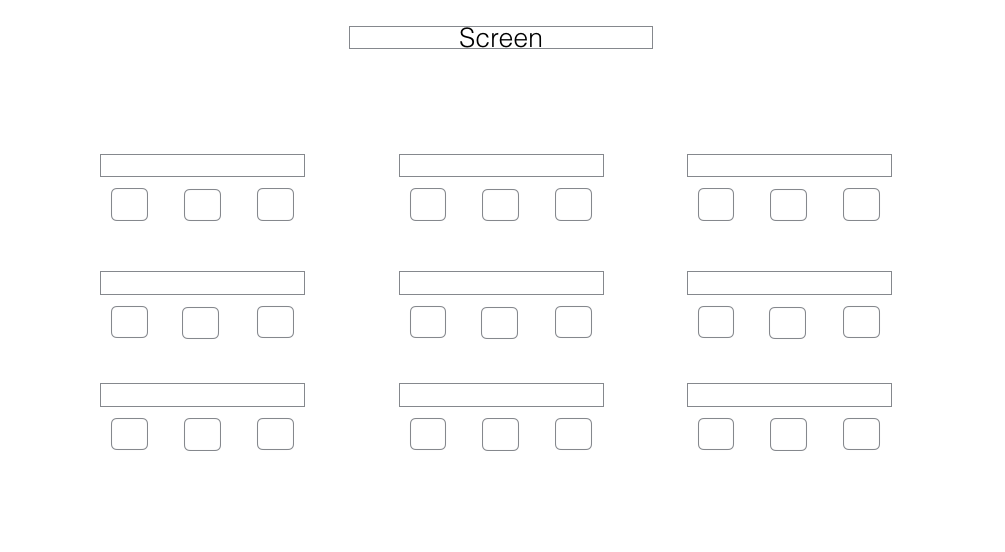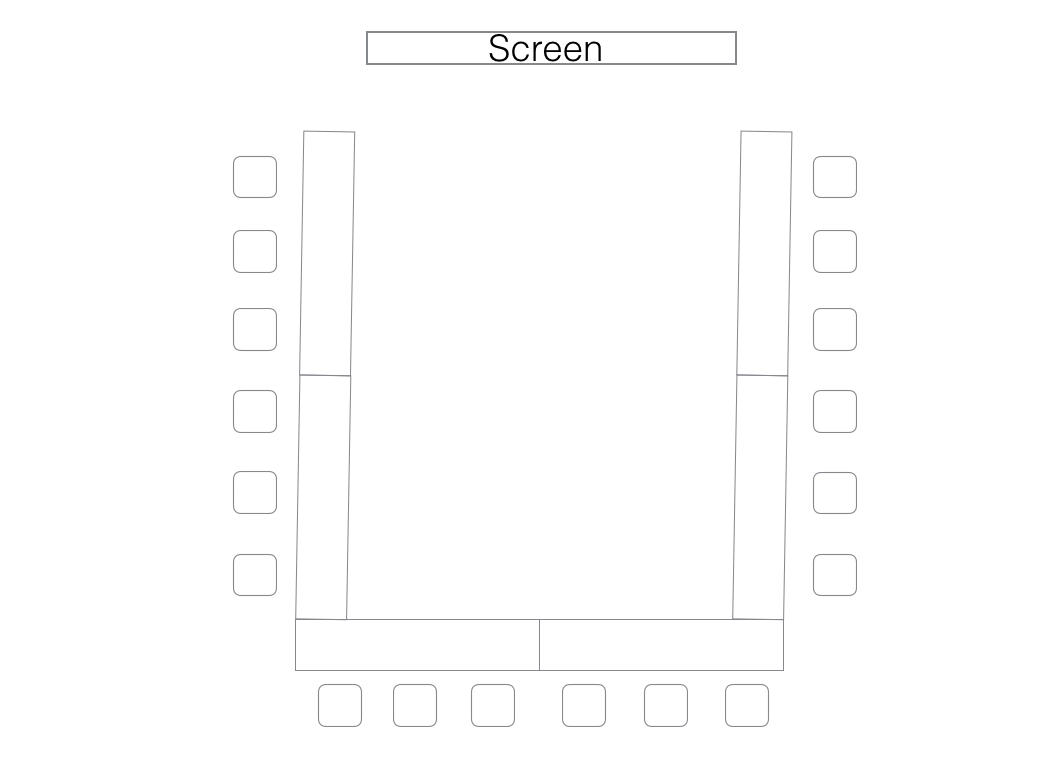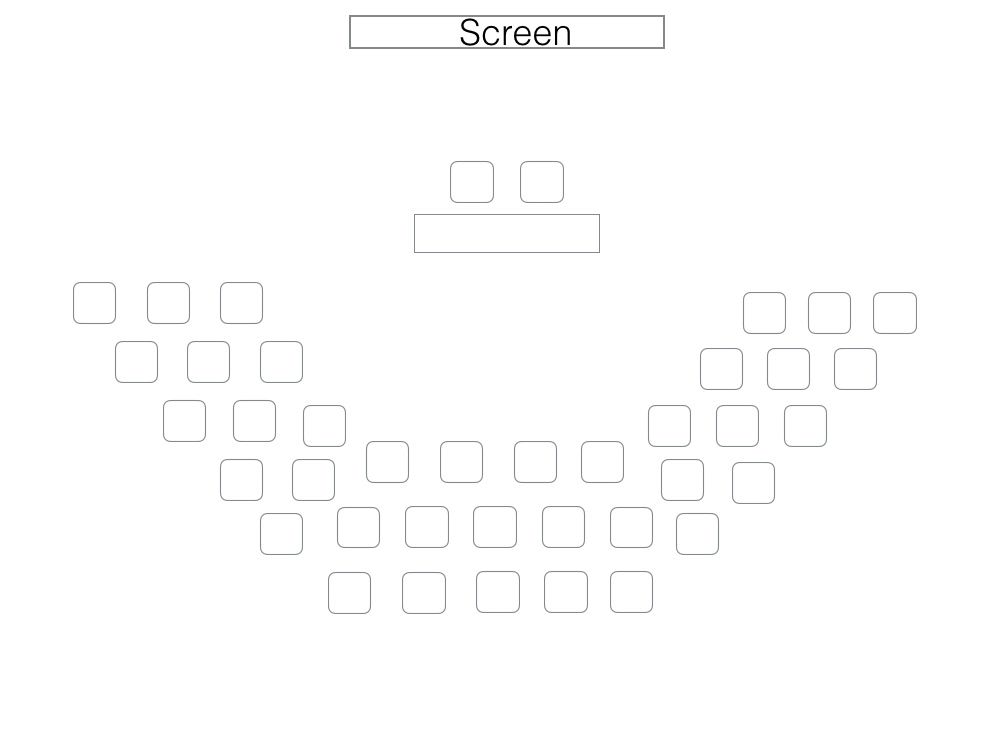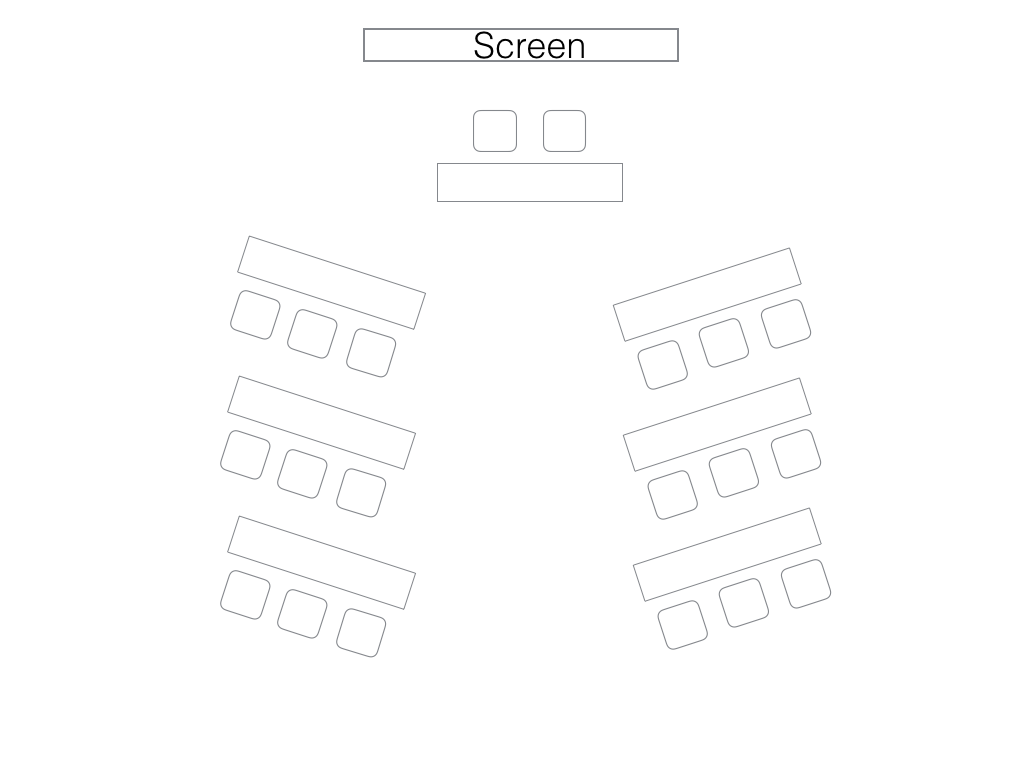Classroom/Training Room Layout Styles/Setup
/0 Comments/in Tips /by VenueSquareThe setup of the classroom or training room can have significant impact on the learning experience of attendees, particularly when it comes to activities where participation is required.
With that, let’s look at various room layouts and seating arrangements to facilitate an effective and conducive learning experience.
1. Classroom Style
The traditional classroom style layout is suitable for lecture-based training where trainees sit facing the trainer directly.

Classroom Layout
Advantages:
- Able to fill up more pax for the limited space.
- Trainer is able to observe the facial expressions of each and every trainee.
- Trainees do not need to turn their neck around to face the trainer like in cluster seating.
Disadvantages:
- There is limitation in space and mobility for participation of trainees in group activities.
- May be a little cramp and distracting to other trainees when moving in and out of each row. (Try to keep a minimum of 90cm gap between tables)
- Trainer not able to move around freely without blocking the view of trainees when attending to a trainee.
2. Cluster Seating Arrangement
The cluster seating arrangement is ideal for facilitating group learning. It encourages group discussions, peer to peer interactions, and a large working space to perform group work (e.g. planning on flip chart paper).

Cluster Layout
Advantages:
- Conducive for group activities
- Encourages easy interaction between peers
- Creates a friendly and open environment
- Large space for working on group activities such mind mapping
- Allows for easy movement and accessibility for trainer to interact with trainees
Disadvantages:
- May be very cramp especially if the room size is small.
- Some learners may have their backs facing the trainer
3. U-Shape Layout
The U-shape layout is excellent for encouraging interaction among the entire class. It creates a feel of “Unity” among trainees and commands the attention of each individual.

U-Shape Layout
Advantages:
- Good audio and visual communication where it is easy to see and hear everyone
- Encourages interaction among trainees
- Suitable for role-playing activities
Disadvantages:
- May not be able to achieve the maximum number of pax for the room size as compared to other layouts
- Trainees may need to turn their heads sideways to face trainer for long periods of time, causing neck strain.
4. Seminar / Theatre Style
Set up with only chairs facing the front where the trainer is positioned. Ideal layout for short talks and sales presentations.

Seminar / Theatre Layout
Advantages:
- Trainer is able to observe the facial expressions of all attendees
- Allows for full attention on the trainer and visual presentation
Disadvantages:
- Not ideal for long sessions as attendees tend to get restless without a table to rest on
- Doesn’t allow for group activities that require tables
5. Broken Circle / Herring Bone
The broken circle is a common layout in University lecture rooms. In some cases there may be multiple rows of broken circles with steps leading up to every row.

Broken Circle Classroom Layout

Herring Bone Classroom Style
Advantages
- Allows visual aids to be used effectively
- Accentuates the leader position of the trainer due to the circled layout
Disadvantages
- Does not allow a lot of space for group activities
- Distracting for other trainees when moving in and out of the row
Regardless of the layout you choose, always keep in mind the purpose of the training session and identify the best layouts to achieve effective learning.
Check out some actual pictures of various training room layouts to get a better idea when planning your next training session!
